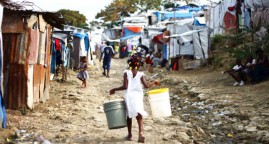A Cuban model for a resilient Caribbean
02/25/2015. With a population of 36 million, the Caribbean region is home to a diverse array of languages and cultures, to islands large and small, to major coastal cities and small mountain villages. But for all its diversity, its countries and territories share an important trait – exposure to a yearly hurricane season that can, at times, have devastating impacts.
In response to such hydro-meteorological threats, the Cuban government has collaborated with UNDP Cuba and UNDP’s Caribbean Risk Management Initiative since 2005 to create the Risk Reduction Management Center (RRMC), a model of local risk reduction management. At the heart of the model is the promotion of local level decision-making that relies on coordinated early warning systems, risk and vulnerability studies, communications systems, effective database management and mapping, GIS, and community preparedness.
Read the article and watch the video on the United Nations Development Programme website
Related Articles
Interview with Pedro Medrano Rojas, UN Senior Coordinator for the Cholera Response in Haiti
03/04/2015. The persistence of cholera in Haiti is mainly due to the lack of access to clean water and appropriate sanitation facilities …
Extreme weather hit 60 million people in 2018, no part of the world spared
01/24/2019. The study showed that earthquakes and tsunamis claimed more lives than any other type of hazard.
De fortes inondations dans le sud et le sud-est de l’Asie : la prévention a évité le pire
11/08/2015. Malteser International se mobilise en Birmanie et au Pakistan.






